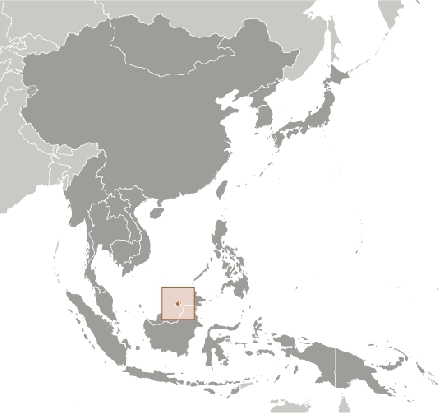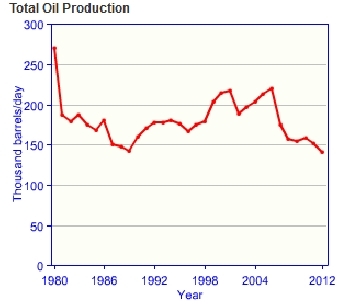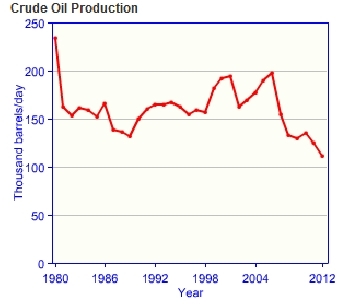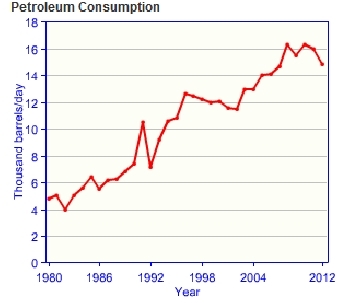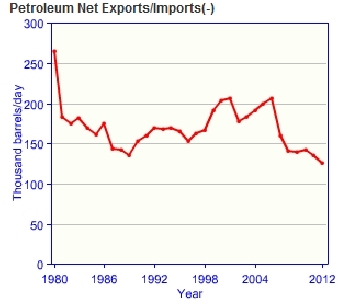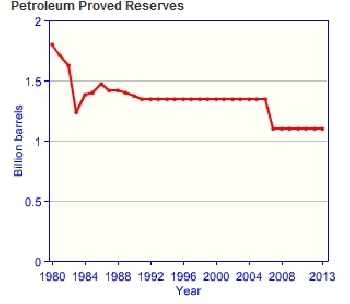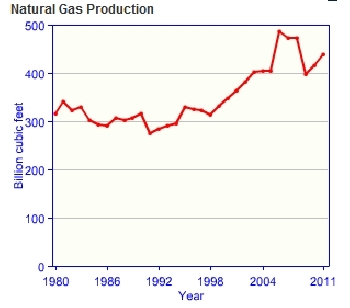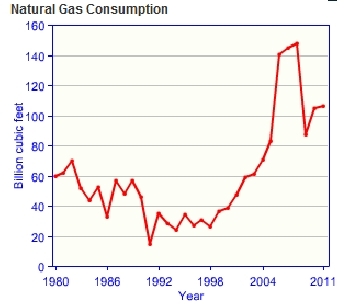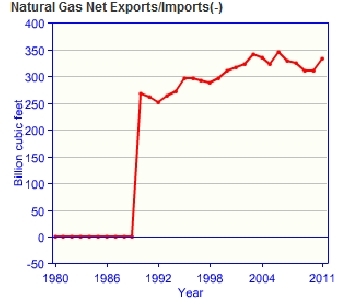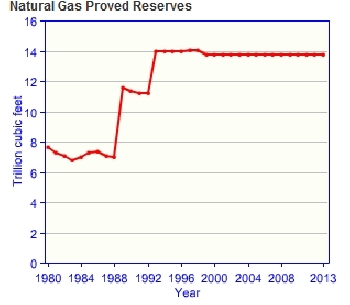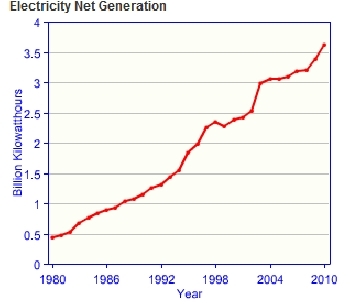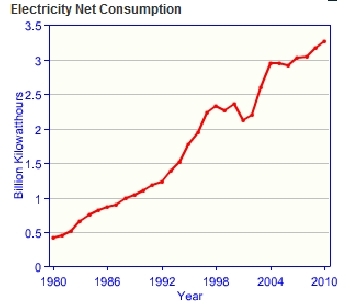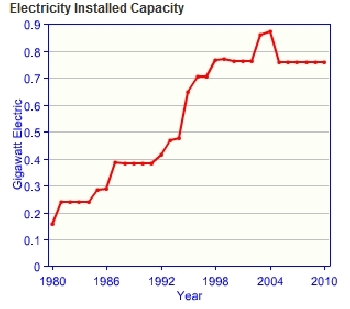Energy profile of Brunei
Energy profiles of countries and regions 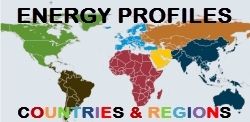 Brunei is a substantial producer and exporter of crude oil and natural gas for Asia and relies on hydrocarbon revenues for nearly two-thirds of its gross domestic product.
Brunei is a substantial producer and exporter of crude oil and natural gas for Asia and relies on hydrocarbon revenues for nearly two-thirds of its gross domestic product.
Oil
Through its long-standing joint venture with Shell, Brunei has produced oil for several decades, primarily from two large, mature fields—Southwest Ampa and Champion—in the offshore Baram Delta. After reaching a recent peak of 220,000 barrels per day (bbl/d) in 2006, Brunei's oil production has declined to 141,000 bbl/d in 2012.
Brunei has an interest in hydrocarbon development in the South China Sea (SCS), although it has not made any formal claims to the hotly contested Spratly or Paracel Islands. Brunei produced about 120,000 bbl/d of crude oil and condensates and 400 billion cubic feet (Bcf) of natural gas from the more shallow waters of the SCS in 2011. An offshore settlement with Malaysia in 2009 allows Brunei to explore untapped deepwater areas in the Baram Delta and issue more production sharing contracts to help prop up oil and gas production.
Despite the recent decline in production, Brunei is the largest net exporter of total oil liquids in the Asia-Pacific region given the country's minimal domestic consumption. In 2012, Brunei's net oil exports were around 125,000 bbl/d, mostly in the form of crude oil sent to key Asian oil consumers. Brunei plans to expand its refinery capacity, as Chinese company Zhejiang Hengyi Group is constructing a new refinery with a capacity of 135,000 bbl/d that is scheduled to come online by 2015. This new facility could shift the dynamics of the country's crude exports in favor of consuming more crude and exporting more petroleum products.
Natural Gas
Brunei produced 439 Bcf of dry natural gas in 2011, mostly from Southwest Ampa and other fields associated with oil production. Although domestic gas demand has steadily increased in the past decade, Brunei still exports on average more than three-quarters of its output. Brunei has been a stable and long-term LNG exporter to Japan and South Korea from its 5-train, 950 million cubic feet per day Lumut LNG liquefaction plant, sending out about 330 Bcf in 2011. Oil company Total made significant gas and condensate discoveries in Block B which could bolster Brunei's gas reserve base and sustain its production levels.
Electricity
Brunei relies on natural gas to fuel nearly all of its electricity generation. However, the country is seeking to diversify its installed capacity, import more electricity through a potential transmission line from Malaysia, expand renewable generation capacity, and improve electricity efficiencies to conserve its natural gas for exports.
Further Reading
- EIA - Country Information on Brunei
- CIA World Factbook - Brunei
- Government of Brunei Official Website
- Embassy of Brunei in the United States
- Bru Net Homepage
- Shell Brunei
| Disclaimer: This article is taken wholly from, or contains information that was originally published by, the Energy Information Administration. Topic editors and authors for the Encyclopedia of Earth may have edited its content or added new information. The use of information from the Energy Information Administration should not be construed as support for or endorsement by that organization for any new information added by EoE personnel, or for any editing of the original content. |
